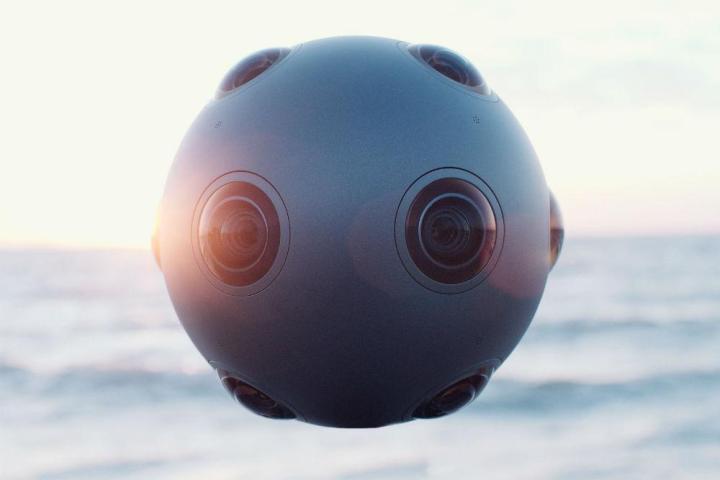
While many believed the Finnish company would follow the likes of Samsung and Oculus and unveil a VR headset at its special entertainment industry event in Los Angeles on Tuesday, it instead showed off something a little different: a solution for capturing VR content.
Ozo is an advanced spherical camera capable of capturing high-quality 360-degree video and audio, and is aimed squarely at media professionals in the TV, movie, and ad industry who’re interested in creating new kinds of video content for consumers.
Conceived and designed by the part of Nokia that Microsoft didn’t buy in 2013, the device, which can be mounted on a regular tripod, captures high-quality video and audio through eight cameras and mics spread evenly around the ball-shaped device.
Captured content can be viewed using VR headsets such as this one and this one, or on sites like YouTube that support 360-degree video.
Nokia president Ramzi Haidamus said he expected virtual reality experiences to soon “radically enhance the way people communicate and connect to stories, entertainment, world events and each other,” adding, “With Ozo, we plan to be at the heart of this new world.”
Indeed, all too aware of how the company’s once mighty handset business suffered horribly after failing to keep up with industry trends in the years following the iPhone’s arrival, Nokia president Ramzi Haidamus clearly sees Ozo as its big chance to establish itself early on in a new and fast-developing space, telling the gathering in LA that Nokia’s new gear “defines a completely new category of virtual reality capture and playback solutions.”
Haidamus may be on to something. While the industry seems more focused on knocking out VR headsets for consumers to watch panoramic video, there’s less high-end gear available for actually creating the immersive content. GoPro is working on a “spherical array” comprising a bunch of its action cameras, and Google, too, is developing similar kit for VR content. Kickstarter has successfully funded several efforts too, among them the Bublcam and 360cam. Nokia, however, seems convinced the Ozo, whose design is still being tweaked, will be advanced enough to grab the attention of professionals in the media industry.
As for the cost of the kit, Nokia either hasn’t decided yet, or doesn’t want us to know till later. We’ll update here just as soon as the information becomes available. The company plans to have Ozo on the market toward the end of this year.



